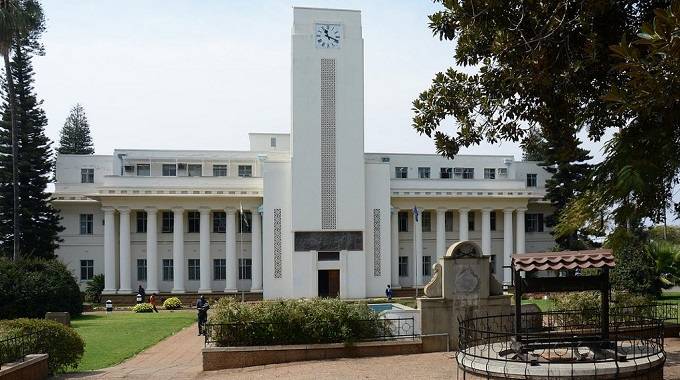The contractor hired to work on the Nyamandlovu Epping Forest water project reportedly stopped working on the project, demanding payment in foreign currency after the government had offered to pay in local currency.
According to the Zimbabwe Water Authority (ZINWA), the contractor had undertaken the work while the country was still using foreign currency but that changed when the government adopted the Zimbabwe Dollar.
As a result, the Epping Forest project stopped yet it was one of the solutions identified to provide an additional 10 megalitres of water per day to Bulawayo.
The Bulawayo City Council (BCC) had committed over US$5million towards the project, of which 85 percent of the work had been done.
Responding to queries at a water crisis meeting held on Wednesday at the Large City Hall on why there was a delay to complete the project, ZINWA Umzingwane catchment manager Tony Rosen, confirmed the contractor refused to continue demanding payment in foreign currency.
But, he said the government is yet to release funding for the work to continue.
“We had a monetary policy change where we moved from the US dollar to ZimDollar and the contractor sort of backed out and said they can’t complete this work using ZimDollar because at the time he undertook the project it was in US dollars so that’s how the project stalled and stopped. The contractor was unprepared to be paid in the current currency and when the project stopped to complete it became a challenge,” he said.
Rosen explained the Nyamandlovu aquifer was divided into two sections, Rochester area and Epping Forest.
“Rochester is where the existing boreholes that pump into Bulawayo are situated and the new area we are developing is called Epping, which is where more of the questions are coming from. When it comes Epping, we were given funding quite a few years back to start working on under the Public Sector Investment Programme and under that programme, we drilled boreholes and one reservoir, then we ran out of funding and for subsequent years, we not allocated any funding to continue with the work,” he said.
Rosen revealed that BCC had come forward and offered to provide funding for the project.
“This is funding to complete the works and we will sort the payment later. We were then contracted to go on to the site and as you have heard from quite a few of the speakers here, quite a bit of work was done almost 85 percent was done,” he said.
At the other project – Rochester, ZINWA is pumping three to four megalitres per day to Bulawayo, although its original design was to pump eight megalitres per day.
“When COVID-19 broke out, the city managed to talk to the government in general and managed to bring three ministers down to Nyamandlovu to see the projects. These included the Minister of Lands, Agriculture, Water, Climate and Rural Settlements (Perrance Shiri) and his deputy (Peter Haritatos), Minister of Local Government, Rural and Urban Development, (July Moyo) and Minister of Finance (Professor Mthuli Ncube) and saw the work to be completed.
“In terms of priority, the first and easiest to have underway was to rehabilitate the existing Rochester system so that we go up from producing three megalitres a day to eight megalitres a day. This is where the ZWL$10.6 million that was mentioned comes in. The money was released to start working on the project and is being undertaken.
“I can currently say for the past two to three weeks we have been sending eight to nine megalitres a day to Bulawayo from Rochester. On that one, I think ZINWA met its targets,” he said.
Rosen said the ministerial delegation noted the work at Epping also had to be completed and were in agreement with both ZINWA and the BCC that the government would avail funding for its completion.
“So we are currently waiting to hear when the Ministry of Finance will be releasing complete Epping Forest project,” he said.
According to the Director of Engineering Services, Simela Dube, Epping was divided into two sections Lot A and Lot B.
LOT A included the following: 2 x 2280m3 reinforced concrete reservoir, Pump man’s quarters, Office block, Pumphouse and a 7.5km x 600mm AC pumping mains.
LOT B included Drilling, linking 20 boreholes with 400mm AC pipeline, Equipping of 20 boreholes and installation of high-lift pumps.
For Lot A, BCC paid US$4.013.914 while for Lot B it cost US$1.174 643.58.

